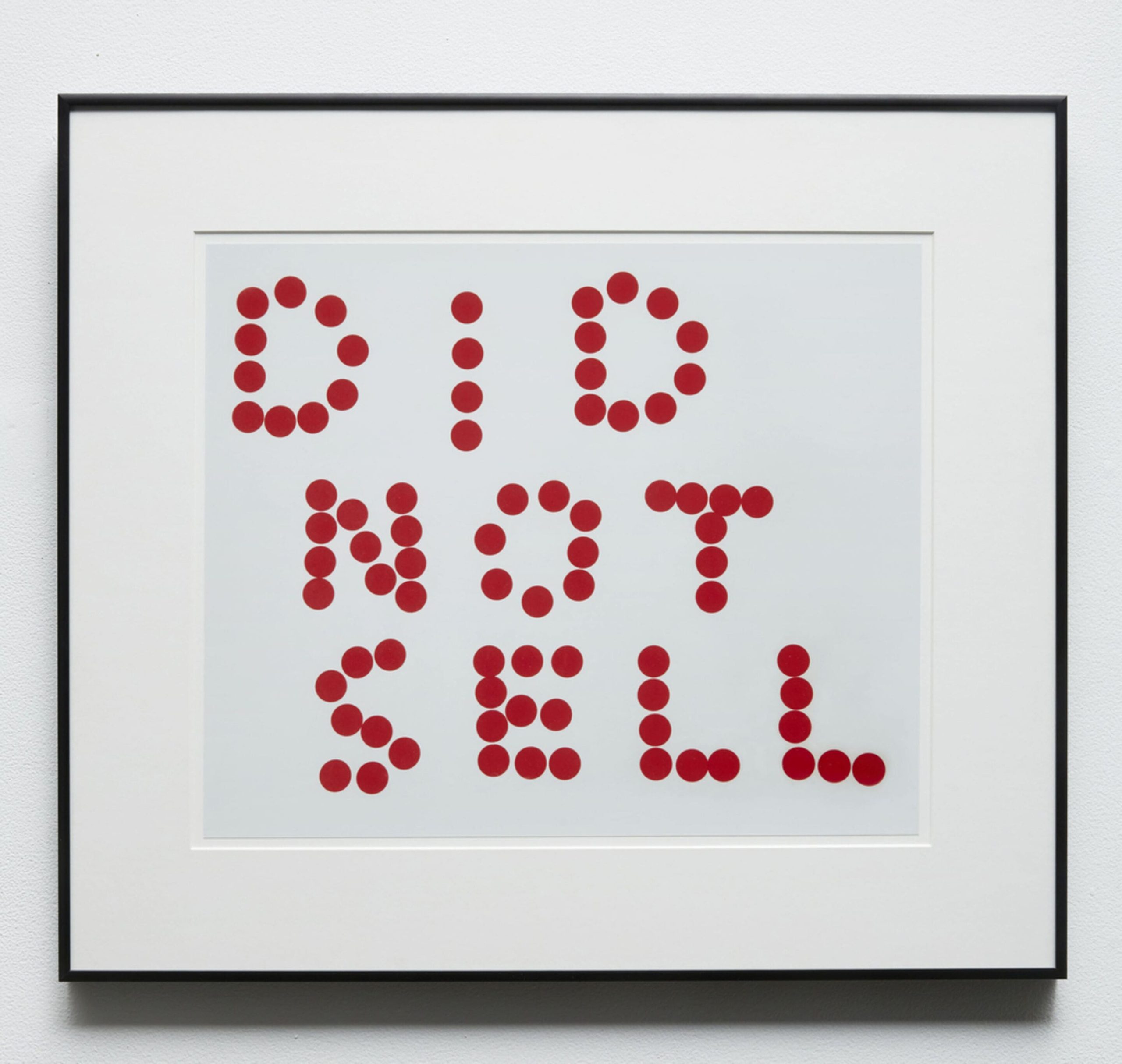
Mark-Making: 5 Abstract Painters You Need To Know
Trends in Contemporary Art
In this article, we’ll answer all your questions about selling your art with your website. However, first and foremost, the answer depends on what type of artist you want to be—different goals as an artist result in various strategies to achieve these goals. We have covered this thoroughly in our article on the different career paths for artists, so feel free to read that article next.
For instance, if you want to become an established artist and work towards finding esteemed gallery representation, then it is best to have no webshop at all—we’ll explain why in the upcoming chapter—with a few exceptions. On the other hand, if you aim to make a living selling your art yourself via an audience you have generated yourself, following the career path of self-representation—be it as an influencer/social media artist, an artist doing all the art festivals, creating an online business for your art with a blog or via online advertising, or any other form of an independent artist in general—than it would indeed be most helpful to have a webshop on your site.
One can also try to balance between both models—a strategy we’ll explain later in this article—keeping your options open for any career path and still managing to sell your art via your website. To conclude, we’ll discuss the main strategy all esteemed artists and successful art galleries use to sell art via their website professionally, strategically, and effectively, including a useful template on how you can do the same. So without further ado, let’s discuss the main benefits and drawbacks of having a webshop as an artist today.
| Advantages of Having a Webshop | Drawbacks of Having a Webshop |
|---|---|
| A direct monetization strategy | Reduces your chances of gallery representation |
| No commissions | Low conversion rate |
| Transparant | Low price point |
| Impersonal engagement with potential buyers | |
| No long-term strategy | |
Let us start with the advantages of having a webshop as an artist. Having a webshop as an artist is a very clear monetization model for your art. If you have an audience, you can efficiently aim to generate sales with your online shop. As a result, you eliminate the intermediary and thus also a commission fee—whether it is a 50% commission for the art gallery that exhibits your work or the 35% commission for Saatchi, where you can try to sell your art online via their platform. Furthermore, an online webshop is as transparent as it gets. It shows what works are available and how much they cost, avoiding the barrier of having to contact the artist to get to know the prices, which can be intimidating for some clients.
If you have an online webshop, it is important not to oversaturate your offer. One of the main reasons why online buyers do not proceed to purchase a work of art is because there is too much choice. Oversupply leads to indecision, as they are worried they might be missing out on a work they would like better when browsing through the numerous available artworks. Furthermore, as they can also see your work online, the more real-life pictures you have of the artwork—from various angles and in various contexts; for instance, on the wall, with a person standing in front of it, from the side, a detail, et cetera—the more likely they will purchase the piece in question. Most online buyers purchase art to decorate their homes (source: The Online Art Collector Report by Artsy), so you could consider making pictures of your art in an interior (something that is rather frowned upon in the high-end art world). You must also add a very clear description, not only of the artwork but also of how the transaction works; think of the payment options, if there is a refund policy, the shipping costs, and the shipping time. In addition, to convince people in doubt, include positive reviews of verified customers to show your webshop is trustworthy. And finally, to seal the deal, you can convince them by creating a sense of urgency, such as a temporary discount.
When it comes to the downsides of having a webshop, arguably the most important thing all artists should be aware of when considering opening a webshop on their website is that it will reduce your chances of gallery representation rather drastically. In the art world, there are numerous unwritten rules and principles. Generally speaking, webshops are associated with artists who are unsuccessful in the art world and were unable to find gallery representation or simply a venue to exhibit, thus (desperately) trying to sell their work by themselves online. Webshops and online marketplaces approach art as a commercialized good, devaluating its artistic properties as a decorative product. As a result, webshops are seen as tacky and not a place for high art—with a few exceptions; for instance, industry-leading dealer-oriented marketplaces such as Artsy. Appearances are very important, and your appearance or perceived level of professionality will drop instantly, even if your webshop is successful.

There are more reasons why galleries don’t like artists with webshops. For instance, it enables collectors to go behind the gallery’s back and purchase the artwork directly, even when it was the gallery who provided the lead for the sale. Think of a gallery that invests time and money in a solo exhibition of an artist with a webshop. A collector visits the show, googles the artist, and discovers they can buy work from that artist via the webshop instead. By doing so, the gallery director who invested in the exhibition and thus the career of the artist is left behind empty-handed. This is especially the case when the artist offers their art online at half of the price of their art in the gallery, but we’ll discuss transparent pricing further in our next chapter.
Another important reality of having a webshop that one must be aware of is the low conversion rate. As studies have shown, online art businesses in decoration and art have an average conversion rate of just 1.5%. This is rather generous, considering this will only be applicable with low-value artworks. Think of prints or low-priced unique artworks, which brings us to the next drawback; the price point. The main reason why online buyers purchase art is to decorate their home, resulting in a different price category than when one is looking to collect art from a promising artist, or when the collector is a patron who aims to support artists, or as a (corporate) collector who is looking for art as an investment. As a result, online buyers set their budgets based on the decorative market value of art and not necessarily the artistic value of the artwork—feel free to read our article on the value of art to learn more about this distinction. This is also reflected in the data concerning online sales, as 76% spend less than $10,000 and 61% spend less than $5,000 (source: the Art Market Report by UBS and Art Basel)—which is actually generous, considering the data also includes the online sales of the biggest art galleries in the world.
As mentioned earlier, a webshop is a lot less intimidating for customers because all the information is visible from the start. However, this transparency also results in a rather impersonal engagement with your clients. Everything happens from behind a screen, via a paywall, with, in the best case, also an email correspondence. However, there is no real contact with the buyer and no contact at all with the potential buyers who visited the webshop and bounced away moments later. There is a lot of emperical evidence that has shown that collectors are one of the most important contacts in the network of an artist to improve their career. Not only to have a recurrent client, and thus more income, but also to be recommended to other collectors and galleries, increasing your reach in the art world and opening new doors. It is to say, it is also beneficial for the collector if your career has an upward trajectory because it will elevate the value of the piece they have in their collection. With a webshop, it is almost impossible to achieve such a synergetic relationship with your collectors.

This brings us to the final drawback of having a webshop, which is the lack of a long-term art career strategy. A webshop is terrific for an efficient sale; however, beyond the dollars, the sale does not provide any additional value to your resume, profile, or career as an artist. This issue is inherently linked to the different career paths for artists. The self-represented artist selling all their work by themselves, operating outside of the art world, has more chances for short-term success but is unable to accumulate success and multiply their prices over time as they cannot climb the ladder of success in the art world. Almost all of your clients will be one-time buyers, and when the money has been spent, the transaction might as well not have happened at all. However, this is something we have discussed thoroughly in our article on the different career paths.
We briefly mentioned pricing on your art website when discussing the drawback of reducing your chances for gallery representation by having a webshop on your website in the previous chapter. Pricing is often a hot topic, and in the art world, if you want to be taken seriously, your pricing needs to be right. Do not price your works too low, or you will be seen as unsuccessful and your art thus of low value, but also don’t price them too high, or you will never make any sales.
With webshops, we have discussed the majority of sales are below $5,000. Due to the decoratively oriented mindset of online buyers, and also due to the competition of the enormous supply of artists selling work online—be it via online marketplaces or via their own webshops—the pricing is naturally being forced to go lower than the market standard in the art world. As a result, not only are you being taken less seriously due to these low prices, but it also becomes impossible for interested galleries to work with you because they have no profit margin with such low prices. Furthermore, your own profit margins become quite slim as well, as you’ll need to produce a lot more, and invest time and/or money to generate more traffic to your website, in order to have enough sales to make it worth the effort. On the other hand, if you set your prices correctly, in line with the market standard of the art world, your conversion rate will drop even further, most likely resulting in little to no sales at all.
There are other reasons not to show your prices; think of the aforementioned tacky and commercial appearance when treating your art as a commercial good. Indiscrete pricing is also something some collectors might dislike because the world can see how much they paid for their brand-new acquisition. It also reduces the interaction with your potential buyers because their questions are already being answered, bringing us to our final chapter, the industry-approved solution to sell your work via your website using a catalog with available works.
If you are considering opening a webshop because you are worried people will not have the opportunity to buy your work, do not worry any longer. Think about it; have you ever seen a successful established or mid-career artist sell their work via a webshop? The answer is no. If you think this is because their gallery takes care of all the sales, your only partly right; however, even their galleries do not have a webshop—yet the total value of online sales in the art world has doubled from $6 billion to $11 up to $13 billion since 2019, without the use of webshops on the websites of galleries. So how do these successful artists and galleries sell art online without coming across as tacky and commerical and maintaining their high-end online presence?
In the art world, online, we use the catalog with available works to generate online sales; a PDF file or weblink to a file listing all the currently available works of the artist in question, including the prices, and most often a page with the artist biography and/or the artist resume. The catalog with available works is arguably one of the most important documents for artists, and you should always have yours up to date and prepared—not only for inquiries from collectors but also to send out to galleries who are interested in working with you or to add it to your application for a grant or residency.
All art galleries and serious artists use this strategy, and seasoned collectors are aware of this common practice. By doing so, instead of setting up an entire webshop, risking your chances for gallery representation and coming across as too commercial and tacky and thus devaluating your art, you can simply add an inquire button on your portfolio/selected works page of your website, opening a new email directed to your email address with a subject and text asking for a catalog with available works. You could also mention this on the about page, which would look something like this; For further inquiries, please write to [email protected]. However, when using a button with a predesigned subject and text, we can reduce the barrier of contacting the artist further. Some artists don’t even use such a button or line on the about page because seasoned collectors know they can ask this. Thus, simply having your contact information on your website is enough.
The advantages of this strategy are clear; you maintain a high-end profile as an artist, your pricing remains discrete and flexible, you will have a higher conversion rate, and most importantly, you can engage directly with the potential buyer and acquire their contact information for your central contact list. As a result, even if they don’t purchase on their first request, you can stay in touch and potentially secure a sale in the future, perhaps after visiting one of your future exhibitions and being convinced when they see the work in the flesh, whereas the webshop visitors who did not purchase anything after reviewing your prices transparently online are lost forever. It is common knowledge in marketing that a person needs to encounter a product, service, business, or person, seven times on average, before they feel the urge to act on it. Having acquired their contact details, with permission, you can now work towards those multiple encounters and make the most of their web visit.
There are also unwritten rules about how a catalog with available works should look and what information it needs to communicate. As with all documents for artists, the design must be very simple, clean, and professional. Do not create a colorful catalog using a portfolio template on Canva or InDesign. Instead, you should create a simple PDF via Word or Pages, A4 in size, with a black or dark grey font on a white backdrop. You should have a simple cover page, a resume and/or biography page—also set up following the unwritten rules of the art world—followed by your available works organized chronologically in descending order, starting with the most recent ones and going back in time as we scroll through the pages. One page per artwork, and make sure to include the metadata of the artwork, encompassing title, year, medium, and dimensions, but stay clear of long additional descriptions discussing every single work.

To avoid making any mistakes, we strongly recommend considering purchasing our CAI catalog template, a predesigned catalog including the required structure and design for both your available works as well as your artist resume in the catalog, including additional instructions.
To conclude, what if you want to play both games and implement both strategies? For instance, you have a very large following on social media, and you would like to monetize this by offering some limited edition prints on your website with a webshop without losing your credibility and chances for success in the high-end art world and gallery circuit. How should one approach this tricky balancing act?
The most important thing here is to separate your online shop from your actual portfolio. Use separate tabs, but also make sure you are presenting different pieces in those separate categories. For instance, showing your unique pieces without prices but with an inquire button to request a catalog on your selected works page, and present only limited editions or other publications on your shop page. By doing so, you will have a low-priced product for the lower end of the art market and offer something affordable to your audience while maintaining credibility, value, and professionalism with your actual artistic oeuvre with your portfolio. Also, try to play it cool and avoid overcommercializing the appearance of your shop page. Do not add reviews, mock-ups in an interior, ratings, or discounts.
Here, it is crucial to remain in line with the unwritten rules of the art world when it comes to artist websites in general. Therefore, make sure to consult the following article on artist websites next, or have a look at our overview page with more practical and industry-approved career advice for artists.

Last Updated on July 12, 2024

Trends in Contemporary Art

A Complete Guide

Touching the Invisible

A Reasoned Anthology